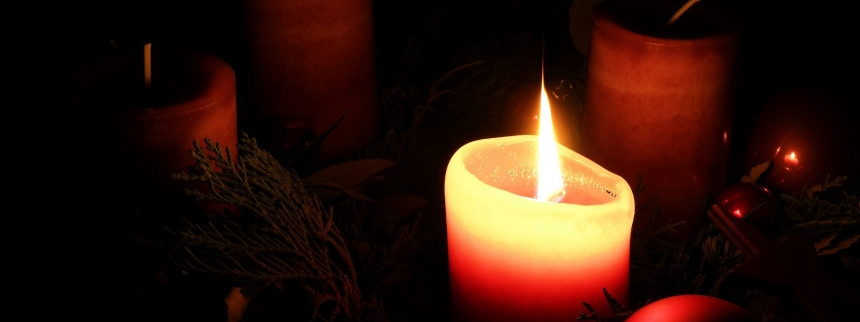
There is no more well-known work of the English author, Charles Dickens, than A Christmas Carol. It was published on Dec. 19, 1843. The first edition sold out by Christmas Eve. There are innumerable editions in circulation today as well as a plethora of stage and movie adaptations. The story had such an impact on popular imagination that the images of a wintry Victorian Christmas in London are now icons of the season.
The full title of Dickens’ story is “A Christmas Carol in Prose: Being a Ghost Story of Christmas.” This was an innovative approach for a story about Christmas, a ghost story. Such an idea is more easily expected from someone like Edgar Allan Poe, Nathaniel Hawthorne or Stephen King.
The book’s plot evolved around a miserable miser, Ebenezer Scrooge, who is visited by four ghosts on Christmas Eve: his deceased partner, Jacob Marley, and the ghosts of Christmas past, present and what was still to come. These restless nocturnal encounters shake Ebenezer from the soured slumber of his life up till then. He awakened on Christmas day with a heart full of generosity and joy. The transformation was so dramatic that everyone was startled. They could not believe that the person they met who greeted them on Christmas morning was the man they knew before.
Dickens’ tale makes no mention of the birth of the Savior. When I searched the text for the words Jesus, Christ, Savior, Bethlehem or manger, the results were zero. The one word that does appear 10 times in the text is “church.” Some commentators consider A Christmas Carol a secular argument for Christmas, yet the word church is sprinkled throughout the story.
What about the ghosts? They are a clever literary device. Ebenezer was accompanied to different times and places by these ethereal companions. His conversations with them would allow the story to unfold. The reader comes to a better understanding of who Ebenezer was and even begins to empathize with this embittered soul through his interaction with the spirits.
I propose that the ghosts serve another purpose as well. They portray the different dimensions of time that accompany us simultaneously even though we may be completely unaware most of the time. The ghosts of the past, present and future always haunt us. Our everyday habits may echo pain or regret from the past. Fears and worries cloud our view of the future. The blindness or busyness of the moment can leave us with a dull indifference to those around us. Still these dimensions of time sometimes reach out and pinch us. Sometimes they can loom over us like Marley howling over a terrified Ebenezer.
The Advent and Christmas seasons can be a particularly haunting time for many of us. The past, present and future can be uneasy and unwelcomed ghostly guests. The name Ebenezer Scrooge has become a humorous cliché for tightfisted, tightwad, humbugged personalities. Dickens may have been more of prophet foretelling, with his pitiful character, a modern mood so bent over on the small world of a hand-held device that it will not be disturbed by the histories or the hopes that all the dimensions of time can bring us. The old Victorian lithographic portrayals of a miserly Ebenezer hunched over his ledgers are a common posture assumed by those absorbed by the pixeled ledgers of today.
If Dickens’ story is a modern Christmas parable, it may offer the hope that this festive time of year, an anxious time for many, can be occasion for us to awaken to the histories and the hopes that can enrich our present and brighten our future. This can be difficult for some of us because of the burdens of the past, the fears of the future or the dizziness of the present.
Catholic tradition has been always saturated with the fullest sense of time: past, present and future. Listen carefully to the Advent readings to hear how all of the past and the future are part of the present ritual of God’s grace unfolding in our lives. While Dickens makes little explicit mention of the Gospels, his Victorian account hints at a very Christian anthropology. Scrooge began the night with much trepidation as Marley’s chains rattle across the floor. Scrooge’s ghostly sojourn through time brought him to a stunning declaration: "I will live in the past, the present and the future!" This sounds like Hollywood exuberance but the follower of Jesus believes this or at least the disciple should.
The last reference to “church” comes in the closing paragraphs of Dickens’ book: “Ebenezer Scrooge went to church, and walked about the streets, and watched the people hurrying to and fro, and patted the children on the head, and questioned beggars, and looked down into the kitchens of houses, and up to the windows; and found that everything could yield him pleasure. He had never dreamed that any walk – that anything – could give him so much happiness.”
During Advent, many of our churches will offer the opportunity for the sacrament of reconciliation. We do not have to go through a night like Scrooge. Instead, we all can go to church and enter the confessional accompanied by the saints and angels. Jesus, the Lord of yesterday, today and forever, is the Good Shepherd leading us through all the dimensions of our life. His mercy will awaken the hope to make of our time and those of others a salvation story, or, borrowing from Dickens, another Christmas Carol.

